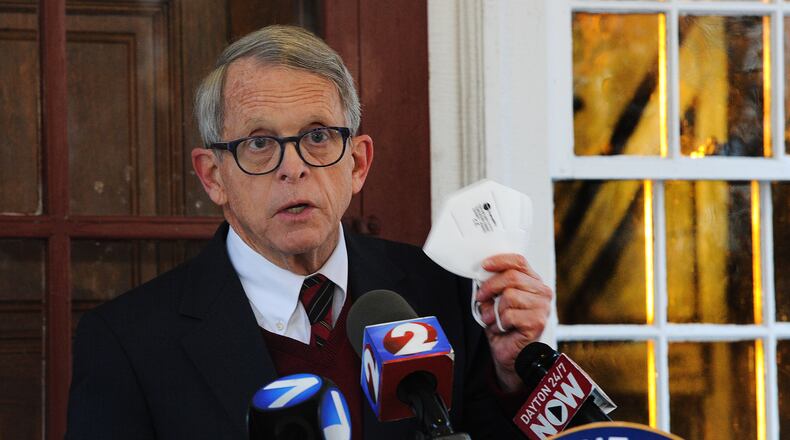Lofgren is the leader of Zone 3, which includes the Miami Valley and southwest Ohio.
Coronavirus hospitalizations are continuing to climb in Ohio, with 4,358 patients in hospitals across the state as of Monday, according to the Ohio Department of Health.
“That is a 59% increase from just two weeks ago,” Gov. Mike DeWine said. “We also currently have 1,079 patients who are in the ICU, which is again far higher than we have seen so far during this pandemic.”
In Zone 3, there are 1,121 COVID-19 patients in hospitals, 253 in the ICU and 171 on ventilators, Lofgren said.
“We’re seeing a proportional amount of spread throughout the entire region,” he said. “This virus is now everywhere.”
So far, the area has been able to handle the increase in patients by transferring them among facilities in the same health care system, Lofgren said.
In some hospitals in the area, they’re expanding post-anesthesia care unit hours so that they can discharge patients later in the day or night, he added.
Hospitalizations increased by 282 on Monday for a total of 24,705. There were 36 ICU admissions reported Monday, bringing the total to 4,454, according to ODH.
“We can’t sound the alarm bell loud enough for people in Ohio to change their behavior,” said Dr. Andy Thomas of The Ohio State University Wexner Medical Center. “With Thanksgiving coming up, keep within your bubble. If you have family coming over, hopefully they’ve been quarantining for 14 days.”
Lofgren said that hospital staff are visibly exhausted and experiencing burnout from the sharp increase in hospitalizations while also dealing with staff shortages as workers get sick.
Cleveland Clinic has 970 caregivers out due to quarantine or coronavirus infections, said Dr. Robert Wylie of the Cleveland Clinic and Zone 1 leader. He added that workers aren’t getting sick in the hospital, but while out in the community.
“Because of this, we have to take those who would have been doing elective surgeries and staff them instead in inpatient care,” he said. “We need your help to prevent our caregivers from being sick and off work.”
In Region 3, which includes the Dayton area, nearly half the hospitals are reporting a nursing shortage today, Lofgren said.
“The impact of these shortages on our workforce can’t be overstated,” he said. “They’ve been working extra hours. They’re really stressed trying to make sure they really continue to provide the highest quality of care, which they’ve been trained to do. This issue around burnout is very real.”
Rhonda Lehman of Mercy Health said that the inpatient side is filling up quicker than hospitals are able to discharge patients.
“We can turn around the increasing trend of cases and hospitalizations,” DeWine said. “The most important thing is what individuals do in their own lives. It comes down to personal responsibility.”
Ohio reported more than 11,800 daily cases of coronavirus Monday, obliterating the previous record of 8,808 cases reported on Friday. However, DeWine noted that due to electronic lab reporting technology issues, information from multiple labs was not processed for two days and was included in Monday’s report.
DeWine also reminded Ohioans that results of some antigen tests are still pending.
The state has tallied 363,304 total cases of the virus, according to the ODH.
Deaths increased by 24 for a total of 6,020.
Earlier this month, hospital officials said that Ohio was seeing an “unprecedented” spike in COVID-19 hospitalizations.
“If we don’t control the spread, we won’t be able to continue caring for the acutely ill without postponing important, but less urgent, care,” said Dr. Bruce Vanderhoff, Ohio Department of Health chief medical officer. “This kind of shift could happen in a matter of weeks if trends don’t change.”
About the Author

